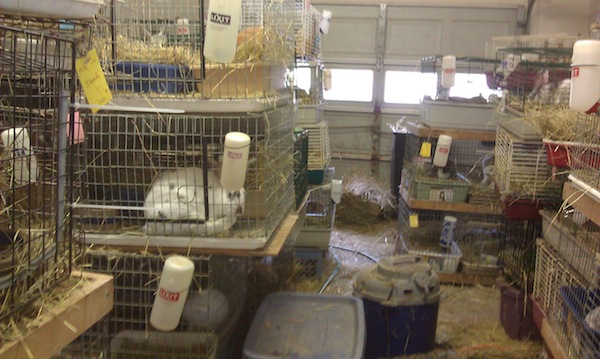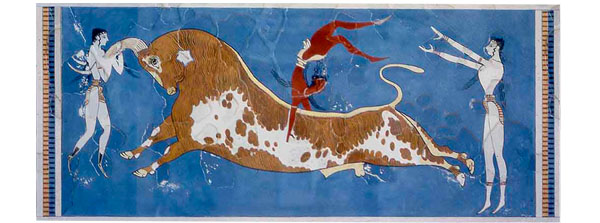Pack Rats & Archivists: Collecting
Skip the B.S.
By Skip Eisiminger

“Personally, I favor the example set by Charles Darwin who as a boy collected specimens of the Coleopteran order. Once, with a beetle in each hand and spotting a rare example of a third, he tossed the bug clasped in one hand into his mouth and grabbed the third before it could lose itself under the leaves. That’s the unhinged spirit that keeps 175,000 museums in this country well supplied with everything from Rembrandts to barbed wire. God bless it.” Skip Eisiminger
“Kershaw County sheriff’s deputies counted 53 cats in the refrigerator.”—AP news release
“Lord, help us keep the wolf of insignificance from our door.”—Saul Bellow
 CLEMSON South Carolina—(Weekly Hubris)—4/8/2013—In Kurt Vonnegut’s The Sirens of Titan, the novelist describes “Skip’s Museum” as a place of “mortal remains—of endoskeletons and exoskeletons—of shells, coral, bone, cartilage, and chiton—of dottles and orts and residua of souls long gone.”
CLEMSON South Carolina—(Weekly Hubris)—4/8/2013—In Kurt Vonnegut’s The Sirens of Titan, the novelist describes “Skip’s Museum” as a place of “mortal remains—of endoskeletons and exoskeletons—of shells, coral, bone, cartilage, and chiton—of dottles and orts and residua of souls long gone.”
Unfortunately, Vonnegut was off the mark if he was referring to me unless he had my card file in mind because, metaphorically, I like nothing better than gathering the “residua of souls long gone.”
No, I don’t have dead cats in the refrigerator, but I have collected and classified more than 400,000 items printed in ink over the last 40 years. Simply put, the file is my first line of defense against boredom, a failing memory, and chaos. It includes quotations, cartoons, jokes, and pictures—indeed, anything written or printed that can be glued to a 3 X 5 card. It’s surprising how many “dottles and orts” can be reduced to that size, which I’m vaguely certain has something to do with the “Golden Rectangle.”
Forty years ago, I realized I was going through life as a “plankton net,” as Annie Dillard wisely recommended, but my net was so full, it was a challenge fishing out the ort I needed at any given time. Furthermore, many items were slipping through the net so, in desperation, I turned to a card-file system because some words and images are just too precious to lose.
About the time I began my file, I wrote:
“I like the quare thing that snaps the routine—
in one appendix, a sprouting bean.”
That couplet grew out of a surgeon’s story I heard on NPR. The surgeon had performed a thousand appendectomies, he said, before he stumbled on one vestigial tube off a large intestine in which a snap bean had taken root and whitely sprouted. I made a mental note, wrote it down once I reached the office, cut it out and pasted it on a card when I arrived home, and filed it under “Medicine.” To give the reader an idea of that bean’s “community,” here are a few of its neighbors:
- There’s a cartoon by J. B. Handelsman in which a doctor tells his patient, “Before we try assisted suicide . . . let’s give the aspirin a chance.” (Cross-filed under “Suicide.”)
- In 2009, robots performed over 80,000 prostatectomies. (Cross-filed under “Robots.”)
- Tobacco-smoke enemas were used as late as 1810. (Cross-filed under “Tobacco.”)
- Nazi Dr. Otto Harnish argued that naturopathy only works on Aryans. (Cross-filed under “Jews,” “Arrogance,” and “Nazis.”)
- In 2008, five times more US vets died because they lacked health care than were killed in Iraq and Afghanistan combined. (Cross-filed under “Irony.”)
- Anglican priests argued in the 19th century that women should not be given chloroform because Eve ate an apple she was told not to.(Cross-filed under “Sin,” “Obedience,”“Chauvinism,” and “Pain.”)
- And as late as 2001, the folk in Louisiana were tossing back a slug of whiskey with a fresh roach in lieu of a tetanus shot. (Cross-filed under “Folk Beliefs” and “Fools.”)
Enough about my legacy, but I come by my obsession honestly. In 1948, Dad told my Mother not to buy any more black-market clocks unless they were unlike anything she already had. She, therefore, came home from Germany with 25 unique timepieces which she hung on the den walls of several homes in succession. The ticking was enough to drive the sentient mad, but Mother loved them until she had to move them, at her expense, not the government’s. When the charm of clocks wore off, she began collecting ceramic roosters—at least they didn’t tick or crow. When she died, she left her fowl collection to my older sister who has added several more. Her daughter has promised to add some hens; thus, collections swell toward the infinite.
More than family, colleagues and friends have been the greater inspiration and justification for my collecting. My current office-mate has a house full of Big Little Books, CDs, and vintage vinyl. Another has cornered the Upstate SC market on silver fruit knives and coin changers that busmen once wore. And a former librarian has over 700 pop-up children’s books in her basement. Only adults, however, are allowed to touch them because, she ruefully admits, too often children tear out Red Riding Hood’s “basket.”
After the famed newspaper-comics collector Bill Blackbeard died in 2011, my friend with the house full of Big Little Books told me about the time he’d visited Blackbeard’s collection in San Francisco. As the harpy he was married to scolded him and his collection, Blackbeard showed his visitor to a side entrance of his modest home which led to the basement where there were piles of old newspapers and bound volumes worthy of the Collyer brothers’ apartment in Manhattan. Eventually, it would require six eighteen-wheelers to haul Blackbeard’s 75-ton collection to Ohio State University where it is now housed. Without the trace of a smile or residue of irony in his voice, my friend said he could not imagine how someone could live with that much accumulated stuff in his house. When thrift turns to hamstering, it seems, denial takes a prominent place on the collector’s shelves.
That observation was confirmed and modified on a recent trip to my father’s home in Tucson. There I met a man who told me of a big-game trophy hunter with heads of four of the five Bighorn Sheep species in North America over his mantel. Alas, four was not enough, and so he shot two Sierra Nevada Bighorns, an endangered species, in the Arizona mountains, cut off one head, left the bodies to rot, and drove to Los Angeles. Unfortunately for the hunter, he parked his car and trailer in an area under drug surveillance. The police obtained a warrant and, searching the trailer, found the sheep’s head as well as the rifle. The fellow I met did the forensics on the bullet which confirmed the poacher’s guilt. We both agreed that when collecting enters the manic phase, it richly deserves a place on the pathologist’s shelf.
Sometimes, however, it’s difficult to separate the eccentric from the pathological.
In 1876, a son in Richmond, Virginia wrote his father in Charlottesville the following, “Dear Pa, The piece I inclose [sic] is perfectly fresh and was taken from an infant’s arm yesterday . . . . Dr. Harris says the inclosed [smallpox] scab will vaccinate 12 persons but, if you want more, you must send for it. I will pin this to the letter so that you cannot lose it as you did before.” Now which collector is at fault: the careless father and his heirs who kept the attached scab without apparently using it for its intended purpose, or the Virginia Historical Society which recently placed it on public display?
Personally, I favor the example set by Charles Darwin who as a boy collected specimens of the Coleopteran order. Once, with a beetle in each hand and spotting a rare example of a third, he tossed the bug clasped in his right hand into his mouth and grabbed the third before it could lose itself under the leaves. That’s the slightly unhinged spirit that keeps 175,000 museums in this country well supplied with everything from Rembrandts to barbed wire. God bless it.
![]()
Note: For more information on the image used to illustrate this column, go to http://www.peta2.com/blog/rabbits-rescued-hoarder/.
